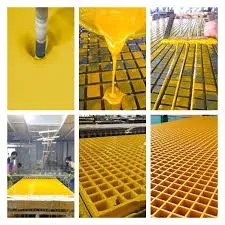
-
 Afrikaans
Afrikaans -
 Albanian
Albanian -
 Amharic
Amharic -
 Arabic
Arabic -
 Armenian
Armenian -
 Azerbaijani
Azerbaijani -
 Basque
Basque -
 Belarusian
Belarusian -
 Bengali
Bengali -
 Bosnian
Bosnian -
 Bulgarian
Bulgarian -
 Catalan
Catalan -
 Cebuano
Cebuano -
 China
China -
 China (Taiwan)
China (Taiwan) -
 Corsican
Corsican -
 Croatian
Croatian -
 Czech
Czech -
 Danish
Danish -
 Dutch
Dutch -
 English
English -
 Esperanto
Esperanto -
 Estonian
Estonian -
 Finnish
Finnish -
 French
French -
 Frisian
Frisian -
 Galician
Galician -
 Georgian
Georgian -
 German
German -
 Greek
Greek -
 Gujarati
Gujarati -
 Haitian Creole
Haitian Creole -
 hausa
hausa -
 hawaiian
hawaiian -
 Hebrew
Hebrew -
 Hindi
Hindi -
 Miao
Miao -
 Hungarian
Hungarian -
 Icelandic
Icelandic -
 igbo
igbo -
 Indonesian
Indonesian -
 irish
irish -
 Italian
Italian -
 Japanese
Japanese -
 Javanese
Javanese -
 Kannada
Kannada -
 kazakh
kazakh -
 Khmer
Khmer -
 Rwandese
Rwandese -
 Korean
Korean -
 Kurdish
Kurdish -
 Kyrgyz
Kyrgyz -
 Lao
Lao -
 Latin
Latin -
 Latvian
Latvian -
 Lithuanian
Lithuanian -
 Luxembourgish
Luxembourgish -
 Macedonian
Macedonian -
 Malgashi
Malgashi -
 Malay
Malay -
 Malayalam
Malayalam -
 Maltese
Maltese -
 Maori
Maori -
 Marathi
Marathi -
 Mongolian
Mongolian -
 Myanmar
Myanmar -
 Nepali
Nepali -
 Norwegian
Norwegian -
 Norwegian
Norwegian -
 Occitan
Occitan -
 Pashto
Pashto -
 Persian
Persian -
 Polish
Polish -
 Portuguese
Portuguese -
 Punjabi
Punjabi -
 Romanian
Romanian -
 Russian
Russian -
 Samoan
Samoan -
 Scottish Gaelic
Scottish Gaelic -
 Serbian
Serbian -
 Sesotho
Sesotho -
 Shona
Shona -
 Sindhi
Sindhi -
 Sinhala
Sinhala -
 Slovak
Slovak -
 Slovenian
Slovenian -
 Somali
Somali -
 Spanish
Spanish -
 Sundanese
Sundanese -
 Swahili
Swahili -
 Swedish
Swedish -
 Tagalog
Tagalog -
 Tajik
Tajik -
 Tamil
Tamil -
 Tatar
Tatar -
 Telugu
Telugu -
 Thai
Thai -
 Turkish
Turkish -
 Turkmen
Turkmen -
 Ukrainian
Ukrainian -
 Urdu
Urdu -
 Uighur
Uighur -
 Uzbek
Uzbek -
 Vietnamese
Vietnamese -
 Welsh
Welsh -
 Bantu
Bantu -
 Yiddish
Yiddish -
 Yoruba
Yoruba -
 Zulu
Zulu
High-Quality GRP Fitting Solutions | Durable & Reliable Pipe Fittings
Understanding GRP Fitting An Overview
Glass Reinforced Plastic (GRP) fitting is a crucial component in modern engineering and construction, known for its versatility, strength, and resistance to corrosion. As industries continue to evolve, the demand for materials that can withstand harsh environments while maintaining structural integrity has led to the widespread use of GRP fittings.
What is GRP?
GRP, or Glass Reinforced Plastic, is a composite material made from a polymer matrix reinforced with glass fibers. This combination results in a lightweight yet incredibly strong material with high durability and resistance to chemical degradation. GRP is used in a variety of applications, including pipes, tanks, and fittings, and is particularly valued in sectors like aerospace, automotive, marine, and wastewater management.
The Importance of Fitting in GRP Systems
Fittings play a pivotal role in any piping or structural system as they connect different segments of material together. In GRP systems, fittings are essential for creating a seamless flow within pipelines, ensuring the integrity of the system, and facilitating easy assembly. The ability to customize fittings to meet specific engineering requirements enhances their application across diverse industries.
Advantages of GRP Fittings
1. Corrosion Resistance One of the standout features of GRP fittings is their high resistance to corrosion. Unlike traditional metal fittings, GRP does not rust, making it ideal for industries that deal with aggressive chemicals or saline environments.
grp fitting

2. Lightweight GRP is significantly lighter than metal alternatives, which simplifies transportation, installation, and handling. This lightweight nature also reduces the need for extensive support structures, leading to further cost savings.
3. Strength and Durability GRP fittings exhibit exceptional tensile strength and impact resistance. They can withstand extreme temperatures and pressures, ensuring longevity in various applications.
4. Design Flexibility GRP can be molded into complex shapes, allowing for innovative designs that traditional materials may not accommodate. This flexibility benefits engineers in creating more efficient systems.
5. Lower Life Cycle Costs Although the initial investment in GRP fittings may be higher than traditional materials, their long lifespan and reduced maintenance needs contribute to lower overall life cycle costs.
Applications of GRP Fittings
GRP fittings can be found in numerous applications across different sectors. In the construction industry, they are used in water supply and drainage systems. The electrical sector utilizes GRP for cable protection and support structures, while the oil and gas industry benefits from GRP’s resistance to harsh chemicals. Additionally, GRP is widely used in the manufacturing of tanks for storing corrosive materials.
Conclusion
GRP fittings represent a significant advancement in material technology, providing effective solutions for a variety of industrial challenges. Their combination of lightweight properties, strength, and corrosion resistance positions them as a superior alternative to traditional materials. As industries increasingly prioritize sustainability and efficiency, the role of GRP fittings will likely continue to grow, cementing their place as a dependable component in modern engineering and construction practices. Adopting GRP technology paves the way for innovative designs and sustainable practices that benefit both industries and the environment.
Latest news
-
High-Quality Fiberglass Car Bodies Durable GRP Car & Boat Body SolutionsNewsJul.08,2025
-
High-Quality Fiberglass Dual Lamination Product Manufacturer Durable FRP & GRP Dual Lamination SolutionsNewsJul.08,2025
-
Rectangular Tank with Dimensions for GRP Calculation Custom Fiberglass GRP Rectangular TanksNewsJul.07,2025
-
High-Quality Fiberglass Weir Custom FRP Weir & Fiberglass Tanks ManufacturerNewsJul.07,2025
-
CPVC FRP Pipe A Reliable Choice for Industrial Applications High Strength & Corrosion ResistanceNewsJul.07,2025
-
Fiberglass Scrubber for Effective Cleaning and Stain Removal – Superior Performance in Various ApplicationsNewsJul.06,2025









